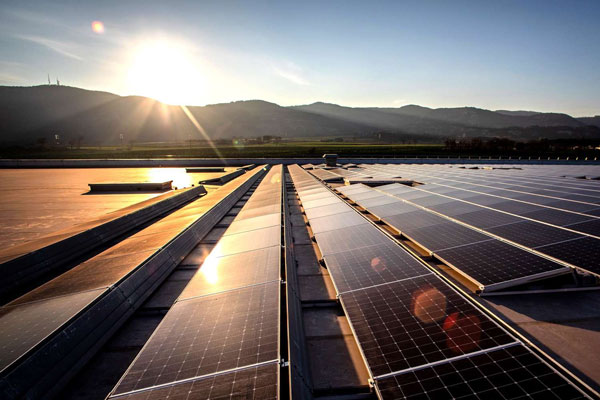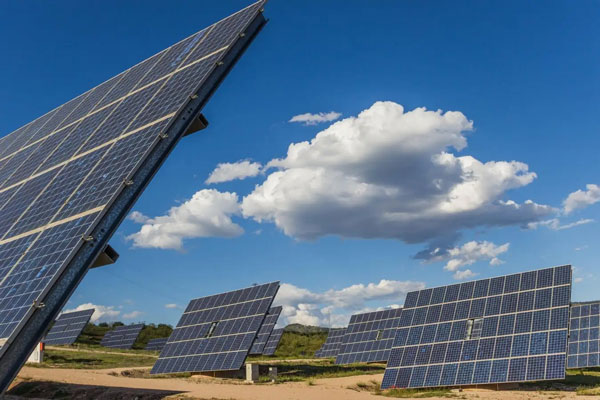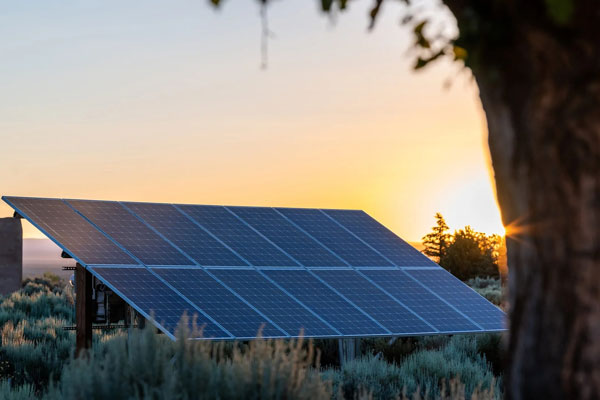Size Difference
Considering the dimension of a solar project, residential and commercial appliances differ. The size of a residential panel is about 1.6 meters by 1 meter. It is estimated that the power output of such a panel ranges from 250 to 400 watts per panel. The size of commercial solar panels is usually more. They can reach over 2 meters in length and can produce 400 to 500 watts of power each. The size of panels used in commercial projects is enlarged for companies to install solar arrays on factory roofs or a business complex to maximize energy generation.
Efficiency and output
Commercial projects have more advanced technology applied and are more powerful. They typically use bifacial cells, which, as opposed to monofacial types used for residential purposes, capture sunlight from both sides of the panel and can produce energy with better efficiency up to 30%. A commercial installation at an advanced manufacturing plant in California uses bifacial panels and can produce an output of about 1,200 MWh of energy per year, which reduces operational costs.
The complexity of installation
An array on factory roofs or a business complex is usually more complicated to install and needs more attention to be paid to planning and implementation. Commercial installations of solar projects require more difficult preparation. The simplicity of a residential installation is conditioned by the size of the system, which is estimated to include the roof of a single family home. A detailed site analysis and structural reinforcements are required for a 500-panel array to be installed on a large metal building on a distribution warehouse in Texas.
Cost
The size of a commercial project enables more efficient implementation, and a cost per watt is usually lower. The general cost per watt for the installation of solar systems on factory and other roofs is estimated at about $3, and commercial projects overall are able to lower this cost to about $2 per watt. This difference can be connected with the fact that larger installations can negotiate better prices for components and labor. It is also possible to cover fixed costs by dividing them by the number of modules installed. Additional costs are usually spread on a larger amount of produced energy, which also helps to reduce the initial cost of installation.
Regulatory differences
Commercial projects also acquire more difficulties with realization due to regulatory measures. As these are larger installations, they can also be provided with specific incentives. A commercial installation can be offered federal investment tax credits, which are not applicable for residential users. This fact can also serve as an additional document proving that solar projects located on a business complex platform are usually more developed and efficient, even though they require more investments. Many commercial projects are also subsidised by the state, as was in the case of a solar farm in Nevada. The investor acquired a subsidy of 30% through state-specific tax incentives for such installations. Such an installation is also made more profitable by the excess energy, which can be sold to the grid. A comparison can be drawn between a suburban New Jersey residential installation including 20 panels that can produce the amount of power adapted to each state to be produced by a residential farm each year to save $1,200 per year in its costs of electricity.
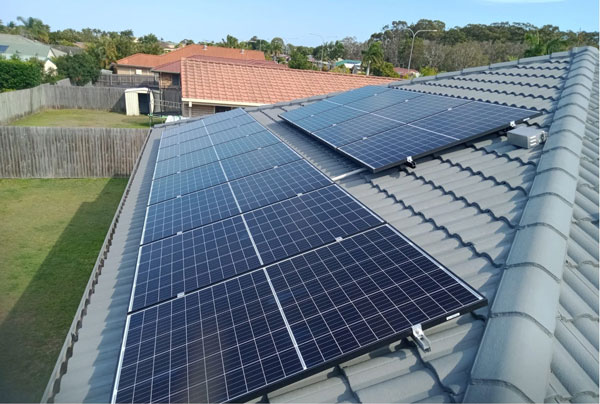
Efficiency Level
In both residential and commercial cases, efficiency is a key factor in determining the relevance of energy production. The reality shows that commercial solar panels benefit from higher efficiency levels due to the novelties and advancement of their technology. The efficiency of a commercial installation depends on several factors.
Technological advancements
Commercial solar panels benefit from the application of technological novelties, the most common of which is PERC. This technology facilitates a better absorption of light and creation of more electron-hole pairs, which are then collected in cells to be converted into energy. Due to this feature, a relatively commercial installation in Arizona was capable of registering an efficiency of 22%. Unarguably, the use of PERC in other commercial installations has brought similar results, which again indicates the high efficiency of this technology.
Scale of the installation
Commercial panels are usually distinguished by their giant size, which is conditioned by the scale of the installations connected to them. Indeed, even a relatively small commercial addition of this kind can encompass several thousand panels, which also contributes to the increase in their overall efficiency. In its turn, higher efficiency in this case is linked to the relatively considered size and actual future potential for the generation of electricity. Such operations as data centers often call for the use of commercial installations, as these are the only capable sources of energy of such scale.
Benefits
Energy bills can be used as a subjective factor in the calculation of the efficiency of commercial panels. In a commercial retail store in winter park, high-efficiency solar panels have helped the management save 40% on the electricity bills. It is caused by the calculation of efficiency. High efficiency can also help ensure that commercial projects succeed and can be used for other examples. The efficiency of 21% seems particularly high due to the building’s location and surroundings, although the increased functionality was needed for this tech company.
Color Changes
The color changes in solar panels are not novelties in the sense that panels for commercial use look different due to their materials and applications in comparison to those that are designed for residential installations.
Material differences
Commercial installations primarily utilize anti-reflective coatings, which makes it possible to reduce reflection and, consequently, enhances the performance of solar panels and reduces the single hue of color. The solar farm in Nevada uses black-coated panels that have enabled operators to capture 5% more energy compared to standard residential installations. The reliance of these products on various coatings in addition to electricity corrosion systems seems to be the primary difference in materials between commercial and residential installations.
Aesthetic aspects
In terms of residential installations, the central consideration is the design and some samples of residential installations use light-grey panels that can be integrated with the overall design of the construct. One such example comes from a residential development in Colorado that utilizes light-colored gray solar panels that support the consistency with the architectural style Hodgson Green. While in most cases, the construction companies aim at hiding the solar panels by installing these devices on the roofs of the houses to conceal them from the public, some companies and residents install these appliances in their backyards and other visible places. These installations are typically designed with lighter colors to ensure the better integration with the design and the color of roofing material.
Performance implications
The darker color is due to the nature of light and color, as these installations typically have protective high gloss on the surface and, because of the properties of materials used to design, they are high ‘solar absorbers’ Bates. Technically, in addition to changes in either hue or the shade of one color, the energy intake of these installations increases. The lights are absorbed by the blue and black cells that are used in commercial installations, whereas light-grey squares take in fewer light aggregates.
Real life, application, and visual impacts
A shopping center in California complies with the use of dark-blue highly absorbent solar cells in its parking lot. The facility saves on their electricity and improves their performance, whereas their visual appeal and the ability to maintain the look while employing a range of panels can ensure the appeal of the object. The changes in one primary color are due to the design and materials, and this provides acceptable results.
Installation Process
The installation process reflects the most significant differences between residential and commercial solar installations. Commercial installation generally requires more intricate processes than residential because of their scale and compliance requirements.
Site Assessment and Planning
Commercial installation requires a much more thorough site assessment. A retail company in Texas performed various solar potential studies including sun path analysis and loading solutions to figure out the best orientation for its 3000 panels placed on the rooftop of the store. This process also includes cybersecurity measures and detailed plans to make it compliant with the building codes.
Equipment and Scale
The second important characteristic of the commercial installation process is the type of equipment used and its scale. For example, a logistic company in Ohio used specially designed reinforced steel mounts for their solar panel arrays capable of producing 2 MW of power. They also used a 2MW solar inverter and equipment by SolarEdge, specifically designed for large commercial solar projects.
Regulatory Compliance and Permits
Commercial installations require longer periods for permits and face a higher level of government scrutiny concerning regulations. Before a university installed its site on its building rooftop, the project had to endure an analysis of multiple zoning issues, as well as an environmental study. The permission was granted only through the work of solar panel activists. It took more than 6 month before the panels were actually installed in order to make the system compliant with the state requirements.
Professional Installation Teams
Installation process requires teams of professionals with different specialization backgrounds. A manufacturer in Michigan used the help of electricians, engineers, and solar technicians to carry out the installation. To make it safe and compliant another master electrician had to be hired to keep the entire process compliant with the electrical standards, as well as safety rules.
Real World Efficiency and Application
The real world example of the complex installation process can be seen in an industrial complex in New Jersey. This project was constructed over five phases so that a business would continue functioning throughout the installation and so that each phase was best oriented for actual energy production.
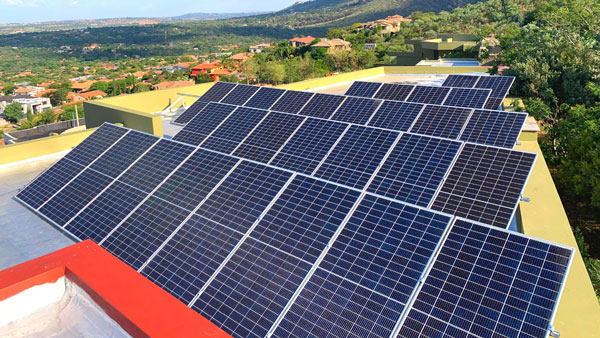
Market Demand
Sounds There are nuances surrounding the market demand for solar panels contingent upon whether one is addressing residential or commercial sectors. Both markets are growing, but the stimulating factors are very different in nature.
Residential Solar Demand The growth of the residential solar market demand is stimulated by a number of factors, such as increasing energy costs and environmentally conscious homeowners. A survey conducted in California has revealed that this particular technology is becoming more popular with consumers, with installations having increased by 20% annually for the past 5 years. A key motivating factor has been the desire to save on utility bills. State incentives for the production of renewable energy have also played an important part.
Commercial Solar Demand The demand for this type of technology in commercial settings is generally fueled by corporate policies aimed at sustainability as well as potential major cost decreases. There are multiple examples, one of them being the story of a national grocery store that now sports solar panels on 200 of its buildings, having reduced its carbon footprint along with energy expenses, now 30% below the level it recorded before the installment.
Governmental Policies
One way in which governmental policies stimulate investment in this area is through favorably net metering rules and tax deductions. In New Jersey, commercial solar installations have increased by 35 % annually upon the adoption of such incentives.
Solar Technology and Demand
New technological options also directly affect demand. One of the Silicon Valley tech companies developed a newer type of residential panel complete with battery storage, the convenience of which spurred particularly high retail demand. In the first six months, the interest in purchasing the new gadget was noted to have been 50% ahead of market expectations. Real-World Dynamics The city of Georgetown, Texas, has been even able to fuel an entire retired community’s solar panel project by local municipal bonds and now allows its citizens to invest in solar installations on their homes and public facilities. More and more big urban centers adopt or move towards such energy sources.



